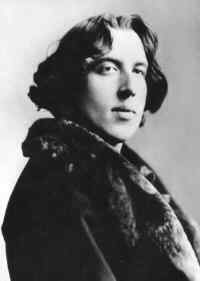OSCAR WILDE
|
|||
|
|
PRECEDENTE
|
HOME PAGE
|
INIZIO
|
|
Aestheticism
in The picture of Dorian Gray The name of Oscar Wilde is
associated with Aestheticism. The work that bests expression his aesthetic
creed is The picture of Dorian Gray.
This strange novel was greatly influenced by Huysmans’ A Rebours, the famous <<yellow book>> that Lord Henry
gives Dorian. The effect of A Rebours on
Dorian is extraordinary; when Lord Henry says: “I thought you would like it”, Dorian answers: “I didn’t say I like it, Harry. I said it
fascinated me. There is great difference”. The Aesthetes reject the
idea that art must be didactic, and advocated the principle of “art for art’s sake”. They were
fascinated by the contrast art – life, asserting the superiority of art, and
their supreme aim was the cult of beauty. Beauty, as pure form, is only reality
that matters; the great abstractions, like truth, morality, etc…, are elusive
and cannot be grasped. Formal, i.e. artistic values, are therefore the only
“real” values. In this novel it is
possible to recognise the motive of the Doppelganger. The final stabbing of
the picture and subsequent inversion of the roles can be read in more than
one way: the triumph of art over life, because in the end it is the picture
that survives in the glory of its beauty, but it can also signify the
impossibility of a life pursuing sensual and intellectual delight with no
acceptance of moral responsibility. |
|||
|
|
|||
|
|
|||
|
|
|||
|
|
|||
|
|
|||
|
|
|||
|
|
PRECEDENTE
|
HOME PAGE
|
INIZIO
|
